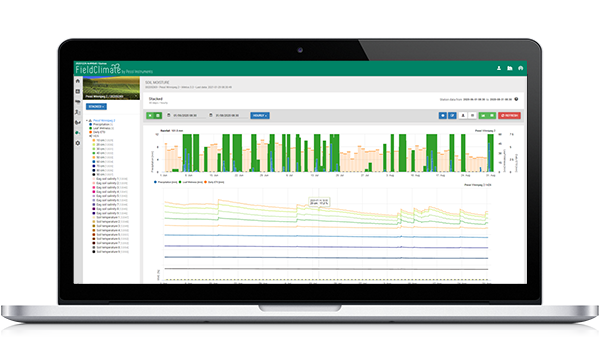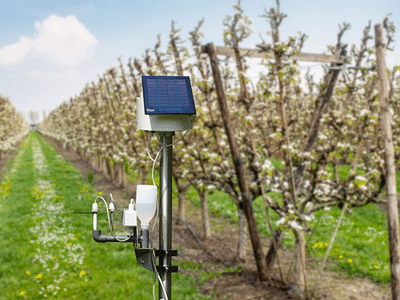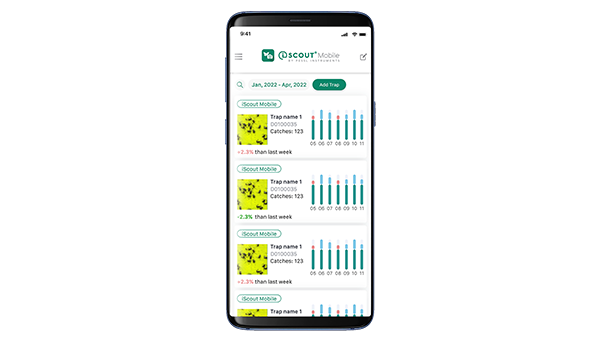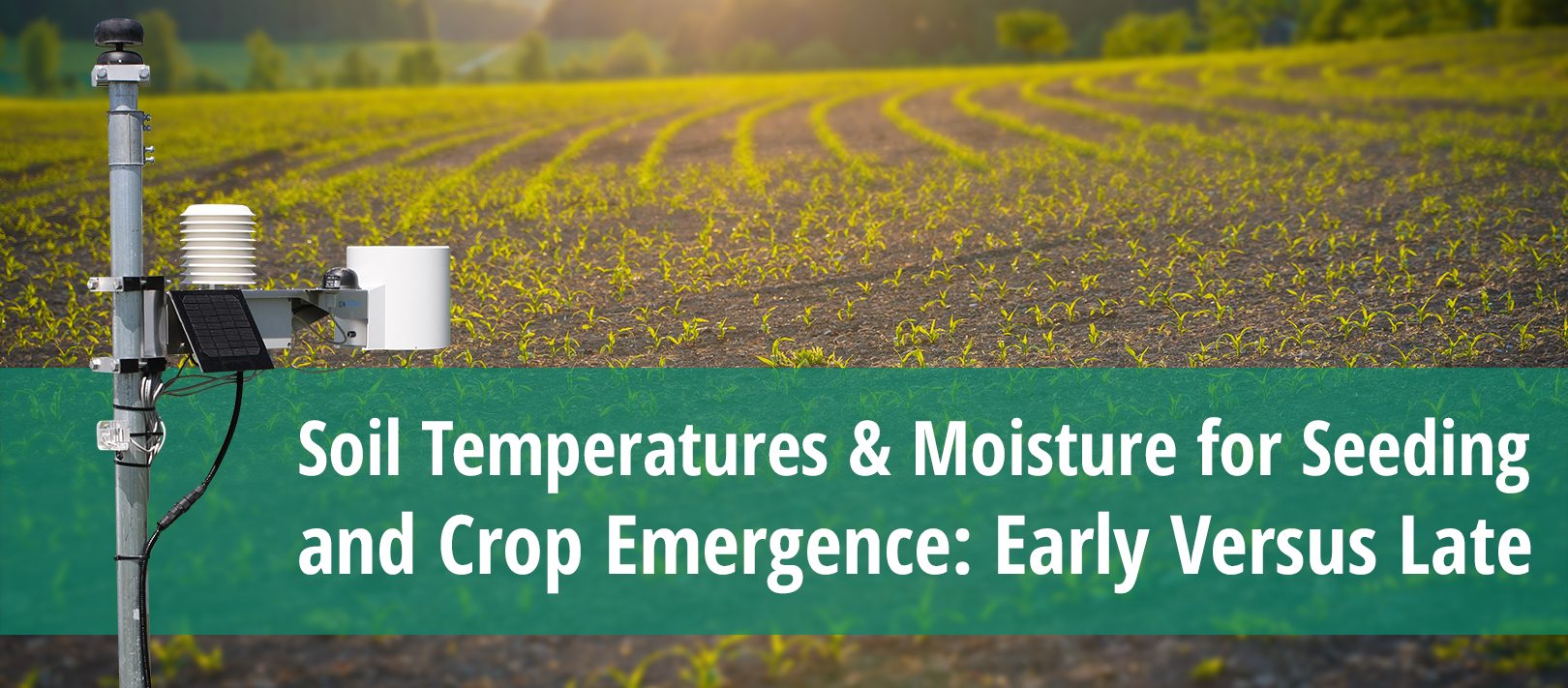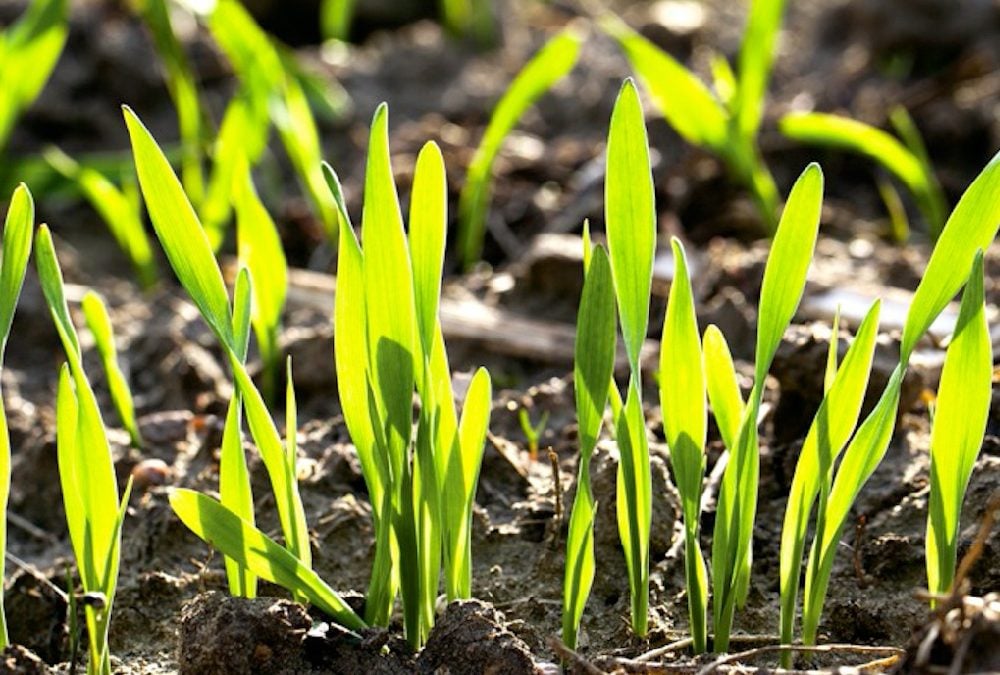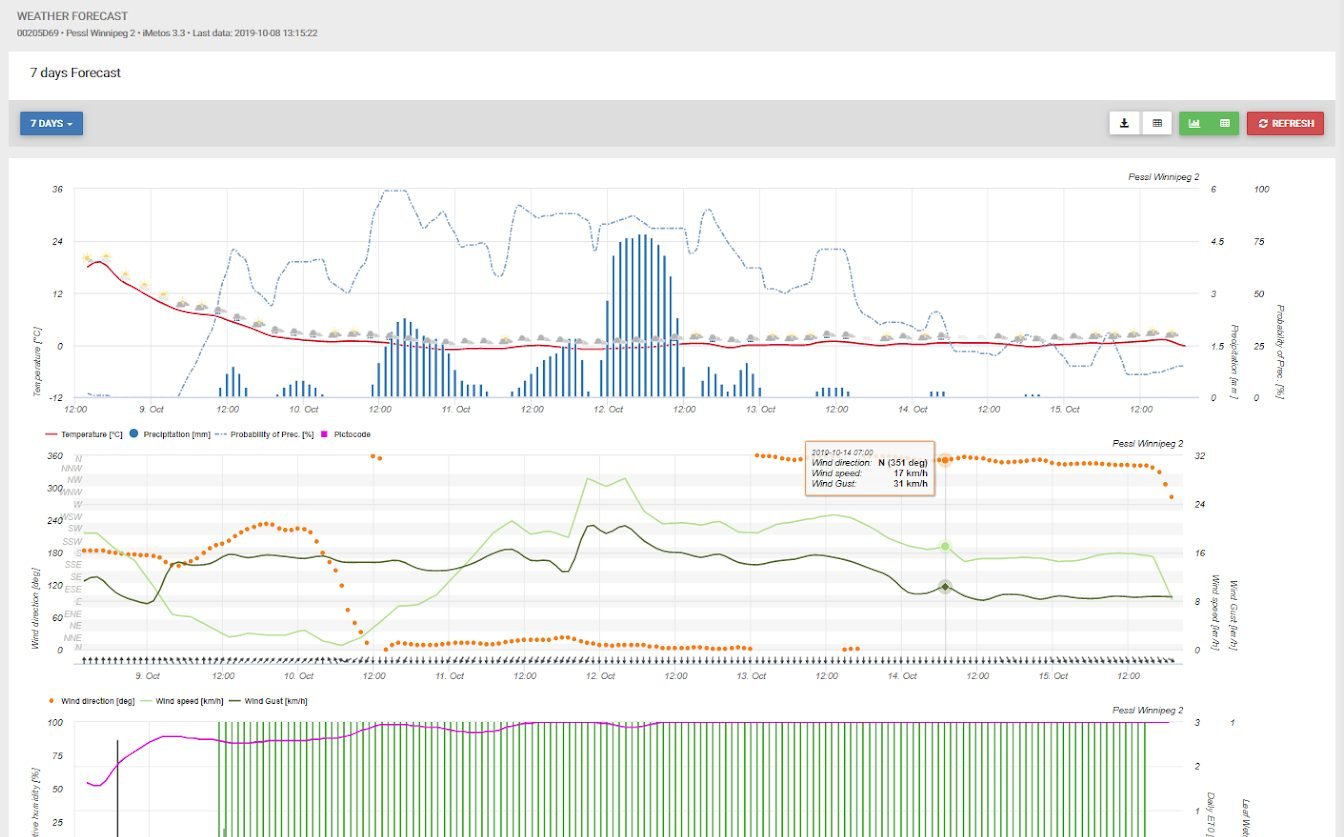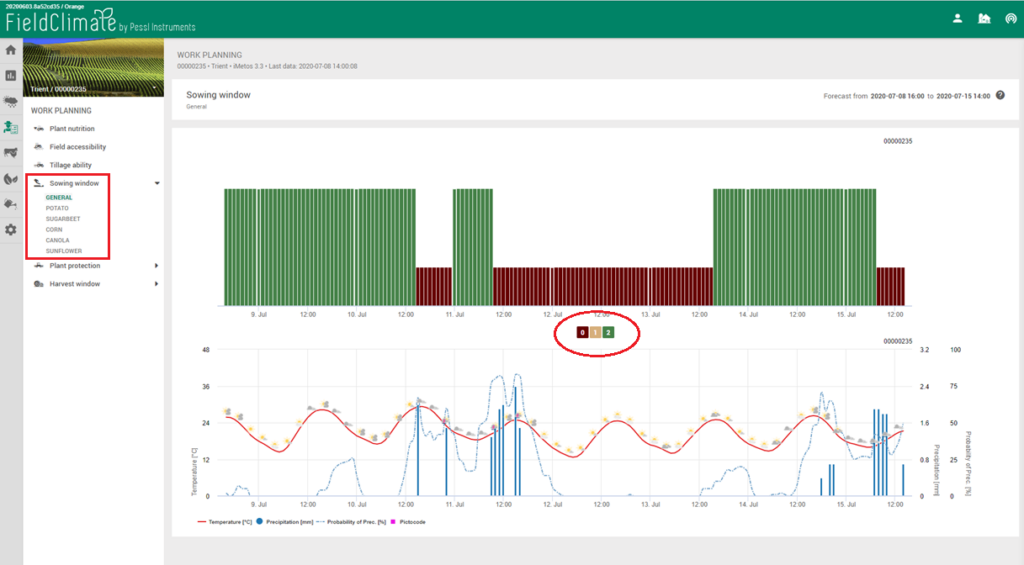Facteurs généraux influençant l'ensemencement et la germination
L'important n'est pas de savoir à quel moment la semence doit être mise en terre, mais de savoir ce que l'on peut faire pour la sortir de terre le plus tôt possible, afin que la plante pousse sainement.
TEMPÉRATURE DU SOL
Le facteur le plus important est la température du sol. Température du sol entraîne tous les processus métaboliques et bien que de nombreux autres facteurs tels que l'humidité, l'aération, la nutrition et la profondeur soient également importants, ils ne commencent à influencer la graine que lorsqu'il fait suffisamment chaud pour que tous les processus biochimiques de la culture soient lancés. germination des graines : >4°C à 6°C pour les céréales et les oléagineux..
HUMIDITÉ DU SOL
L'humidité du sol influe sur la vitesse à laquelle l'eau pénètre dans la graine. Les graines ont besoin d'un certain pourcentage d'humidité par rapport à leur poids pour pouvoir germer. Une humidité suffisante, en termes d'eau stockée dans le sol et de précipitations au début du printemps, joue un rôle important dans la réussite et la rapidité de la germination, à la bonne température. Dépend du type de sol : par exemple >25-30% VWC.
TAUX D'ENGRAIS
La quantité d'eau disponible pour la germination est influencée par le type, la quantité et l'emplacement de l'engrais. Les engrais placés très près des semences ou avec elles réduiront la quantité d'humidité disponible pour la germination des semences, car ces engrais finissent par utiliser une partie de l'humidité disponible pour dissoudre l'engrais et le mettre en solution.
LA PROFONDEUR DE PLACEMENT
La profondeur de semis est le facteur suivant qui est important pour une germination rapide et régulière. L'humidité et la température du sol, le type de sol, le couvert végétal et d'autres facteurs influencent la profondeur de semis chaque année. La profondeur varie en fonction de la température et de l'humidité du sol - peu profonde dans les sols froids et humides. Elle est plus profonde dans les sols secs et chauds. Généralement, de 3,5 à 7,5 cm.
PULVÉRISATION DE PRINTEMPS
La pulvérisation avant le semis est très importante. Les mauvaises herbes qui émergent avant la culture concurrencer les cultures pour l'humidité, les nutriments et la lumière du soleil. Un petit nombre de mauvaises herbes, quelques unes par mètre carré, émergeant avant ou avec la culture peut être beaucoup plus préjudiciable au potentiel de rendement qu'un plus grand nombre de mauvaises herbes se développant plus tard.
Facteurs influençant l'approche précoce par rapport à l'approche tardive
Dans l'ouest du Canada, les semis peuvent s'étaler d'avril à mai et parfois jusqu'au début du mois de juin, en cas d'inondation. En Europe, les semis peuvent s'échelonner de mars à fin juin et dépendent fortement des conditions climatiques d'un pays à l'autre et d'une culture à l'autre.
Qu'est-ce qui est trop tôt ou trop tard pour le développement des cultures et, en fin de compte, pour le rendement ?
Fondamentalement, l'ensemencement dans des sols chauds garantit le meilleur départ possible pour la culture. Une germination et une levée correctes de la culture constituent une étape importante pour atteindre le potentiel de rendement de la culture.
De nombreuses données montrent que les semis précoces (en avril) permettent d'obtenir les meilleurs rendements, mais ce n'est pas le cas. dépend beaucoup de la température du sol et du type de culture.
Les avantages comprennent
- une meilleure humidité du sol pour la germination et le développement,
- réduction de la concurrence des mauvaises herbes,
- une moindre synchronisation de la culture avec les stades sensibles des insectes,
- réduction du stress thermique/des dommages et
- de meilleures conditions de récolte (conditions plus chaudes en août et début septembre).
La plupart des céréales et des huiles ont besoin d'une température quotidienne moyenne de 4°C à 6°C, tandis que le maïs, le soja, les haricots comestibles et le lin préfèrent une température quotidienne moyenne de 8°C à 10°C. Sinon, vous risquez une mauvaise germination et un développement inégal du peuplement.
Le fait de semer dans un sol plus frais ou froid peut ralentir la levée et augmenter le risque que les pathogènes du sol affectent la culture, ce qui peut nuire au potentiel de rendement.
Quelles sont les solutions IdO nécessaires pour semer en temps voulu ?
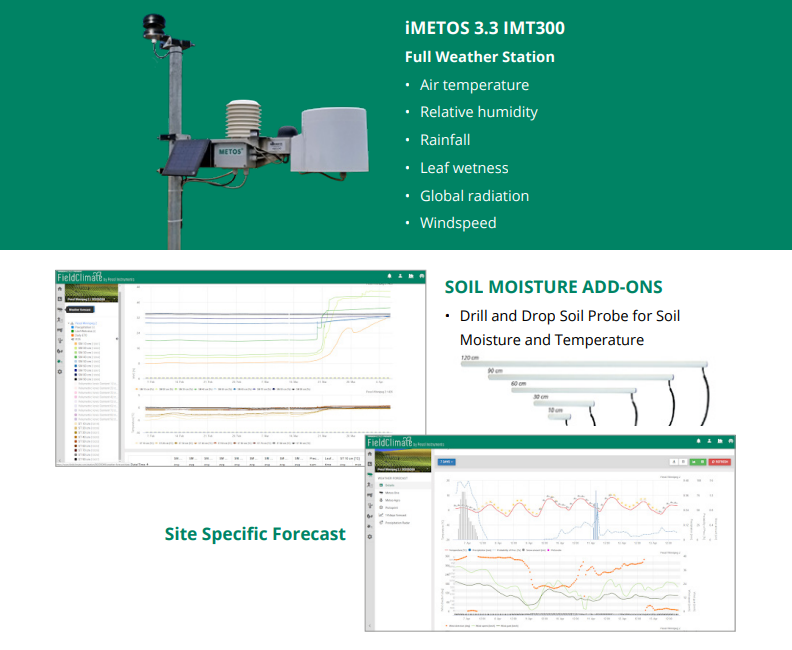

Puis-je déterminer la future fenêtre de semis pour mon champ ?
Il n'est pas possible de déterminer avec certitude la fenêtre d'ensemencement, mais avec des données environnementales fiables et spécifiques au site, collectées à l'aide de capteurs précis, il est possible d'estimer la fenêtre d'ensemencement et de récolte pour les principales cultures, telles que le maïs, le soja et le blé.
Pour s'en approcher le plus possible, il faut
- Prévisions météorologiques
- Outils de planification du travail
- Fenêtre de semis
- Nutrition des plantes
- Accessibilité des champs
- Aptitude au travail du sol
- Protection des plantes
- Fenêtre de récolte
Remarque : chacun de ces processus peut avoir des répercussions importantes sur le rendement et la qualité des cultures.
Proposition de valeur pour des prévisions météorologiques spécifiques à un site et des outils de planification du travail exploitables
Prévisions actualisées toutes les heures, spécifiques à un lieu, pour la planification du travail.
- Planifier et ensemencer de manière optimale sur la base de prévisions spécifiques au site
- Savoir quand les champs sont accessibles en fonction de la quantité de pluie prévue
- Savoir quand pulvériser en fonction des prévisions de pluie, de la vitesse et de la direction du vent pour les pulvérisations en début de saison.
- Contrôle des mauvaises herbes en début de saison
- Savoir quand les dépressions prévues peuvent avoir un impact sur l'efficacité de la pulvérisation
Proposition de valeur = Moins de risques, une gestion efficace
Outils de planification du travail - Fenêtre de semis
La germination et la levée de la culture sont des phases qui ont une influence significative sur le rendement et la qualité de la récolte.
- Pour une germination et une levée uniformes et rapides, toutes les semences ont besoin d'une humidité correcte et de températures optimales.
- Les conditions sont calculées à partir de la température du sol, des précipitations des jours précédents et de la température minimale de l'air des jours suivants.
- La germination des céréales et des oléagineux nécessite une température minimale de 4 à 6°C dans la zone de semis.


- Température du sol
- Humidité du sol (10 - 20 cm de profondeur)
- Température de l'air
- Evapotranspiration
Envie d'en savoir plus ?
Si vous souhaitez obtenir plus d'informations, veuillez télécharger le cas d'utilisation. ICI.

